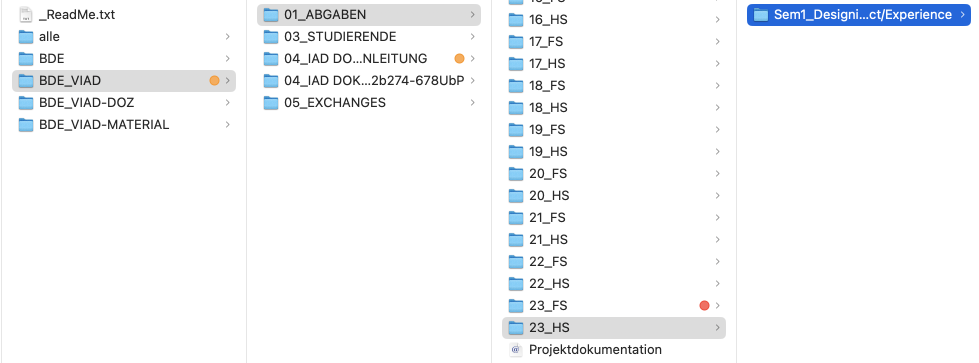-
Introduction
Mehr Weniger anzeigenIn "Object/Experience" course, we will explore how the choices of form and material affect our interactions with the physical world. Perceptual approaches to design consider form as something that affords a sensory-motor experience. We combine such approaches with traditional product design methods such as sketching of the object's geometrical form. We use simple materials such as paper and foam to explore the potential of the three-dimensional forms. You will learn how to study and to design physical objects so that they trigger a sensory experience you wish to create.
Key Topics:
- Design Affordances
- Sketching for Interaction Designers: Objects and their Use, Storytelling and Storyboards, Technical Drawing ( Section, Plan, Axonometric drawing, Perspective)
- Modular Thinking, Patterns, Paper Modelling
- Additive and Subtractive Form Making
- Product Design Werkstatt Introduction, Z-Tech course ( laser-cutting etc.)
- Concept and design of tangible interactive prototype ( Sketching, Photo Series, Text )
Lecturers- Florian Wille
- Verena Ziegler
-
-
-
Beendet: Mittwoch, 4. Oktober 2023, 17:45
Mehr-
The goal of this exercise is to study an object through tactile, kinaesthetic, olfactory and sonic experience it enables. The challenge is to sketch the sensory experience as it emerges: to put the sensations into words and into drawings. You work in couples. One of you blindfolded. The blindfolded person receives an object to be explored through senses other than vision. Without saying the name of the object, the blidnfolded person describes the sensations (soft, curved, warm, loud etc) caused through manipulation of the artifact. The person who listens tries to put these words into sketches without drawing the object. The goal is to sketch create sensory stories, representing a sensory experience of a person interacting with an object.
-
Sketch an objects using in the following techniques:
- Orthagonal views (top / side)
- Isometric views
- 1-Point perspective
- 2-Point perspitive
- 3-Point perspective
- Applying shadows in perspective
-
Sketch the use of an object in a functional way. The human body or its parts (hand or foot) have to be represented. The result should be a drawn user manual.
-
Students invent stories of the use and misuse of an object. The temporal aspect of the story comes into play - How does one represent cause-effect loops, emotional states etc. A results is a cartoon like story showing the misuse of an object.
-
This exercise is an exploration of patterns, scale, repetition and connection. It is composed of four steps:
- From a flat paper create a form by cutting, folding, or weaving it
- Using a repetition of the same element create a pattern or a new object
- Scale the same element into different sizes
- Create different ways of connecting the modules to create a new structures.
- From a flat paper create a form by cutting, folding, or weaving it
-
On 12th of October you'll have an introduction to the low level workshop with Thomas Tobler at the workshop gallery (ZT 3.E07-B Projektraum Low Level). Thomas will pick you up, in front of the low level workshop. Those who already did the low level workshop & laser introduction, can skip the introduction. You are very welcome though to take part in the workshop introduction, as a refresher is always helpful.
Be prepared to get dirty and dusty - so dress accordingly. Also, avoid baggy clothes and tie up your hair, if you have long hair.
-
Build 3 objects out of foam cubes [10x10x10cm]. Each must invite one of the following actions through form:
- spin me
- leave me alone
- shake me
- stretch me
- complete me
- inhale me
- break me
- spin me
-
Create a concept for an interactive lamp. Adapt interactions and/or affordances from other contexts. One way of achieving that can be by giving existing objects a new function (ready mades). Build an experience prototype.
-
Final Presentation
Hervorgehoben



